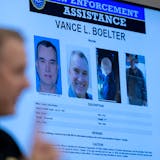Forty people going to work on transit are 40 fewer cars in front of you. That's the physical fact. And a place with poor transit is a less attractive place to live, work and do business. That's the business fact.
Forty percent of all workers in downtown Minneapolis use transit. Eighty percent of all people using transit in the Twin Cities are commuting to work or school. No study has ever found that reducing our transit options and putting thousands more cars on our roads would improve traffic congestion. People understand that. Poll after poll finds that people want more transit.
Business leaders also want more transit, because we understand that we need it, and it works.
• Need: The business members of the Greater MSP "Regional Indicators Dashboard," including the Minnesota Chamber of Commerce and the Minnesota Business Partnership, all agree that access to jobs by transit is a critical measure of economic competitiveness.
• It works: Detailed analysis by the 50-plus regional CEOs at the Itasca Project found between $2 billion and $5 billion in net benefits from completing the transit system, and a high rate of return. The faster the investment, the higher the return.
Recent arguments by the Center of the American Experiment ("The sad truth behind our congested mess," June 9) have been disproved any number of times. But rather than go point by point, let's look at the CAE's own examples. The CAE wants us to be more like Kansas City, where you can drive around at high speed. There's a reason Kansas City highways are empty: It's not as attractive as we are, so its economy is weaker. "Kansas City: Economic competitiveness has slumped," reported the Kansas City Star in 2014, just before Kansas City decided its highways-only approach was wrong and began investing to give people the option to move around by transit, bikes and walking. Same story in the CAE's other example, Indianapolis, which just this winter passed a new sales tax to build new transit lines. The strategies that the CAE admires are being abandoned by the places the CAE itself points to.
Closer to home, the CAE ignores the big increases in transit use and private economic development and jobs that follow every transit investment in the Twin Cities region. We respond to quality transit by riding it and building near it. And that benefits everyone here, whether you use it directly or not, by reducing congestion and increasing tax revenue.
The Minneapolis and St. Paul Chambers of Commerce together represent 2,700 companies that employ more than 500,000 people in the region. These are some of the most successful companies in Minnesota. In fact, they're some of the most successful companies in the world. We consistently hear from our members that they need more and better transit, so we can continue to be a place that keeps and attracts good jobs.


